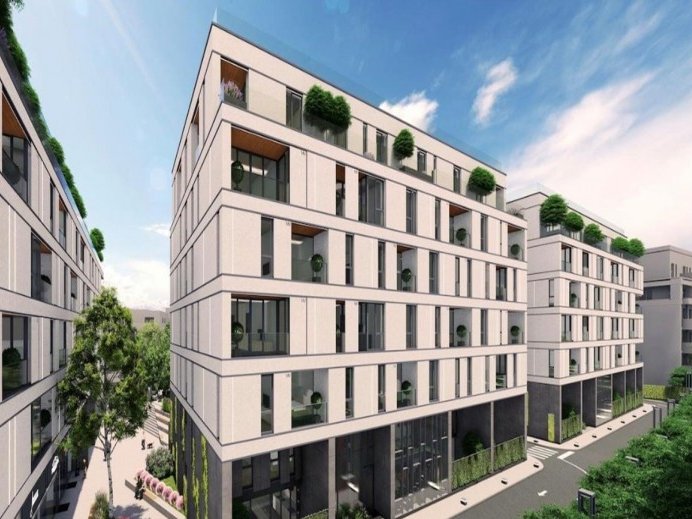Bucharest of Tomorrow: where major developers are moving their money

By Bucharest Team
- Articles
Analysis of 2025–2030 trends, with a focus on emerging areas and project types
After a decade in which real estate expansion pushed the Capital outward, large funds and developers are turning their attention back toward the city’s core, where the last sizable plots remain — the former industrial platforms. The reasons are clear: existing infrastructure, proximity to populated areas, and a high potential for urban regeneration.
Industrial regeneration – the new investment engine
The most valuable land in Bucharest is no longer found in peripheral fields, but in abandoned factories. The big players — One United Properties, Speedwell, Forte Partners, Skanska — are now targeting these disused industrial sites to build mixed-use complexes combining housing, offices, and commercial facilities.
Concrete examples:
- Rocar Platform (Rahova–Antiaeriană) – approximately 21 hectares. Once one of Romania’s largest bus factories, this southwest Bucharest site is being assessed for transformation into a fully developed urban neighborhood, with housing, a school, green spaces, and offices. Its key advantages: direct access to Șoseaua Antiaeriană and proximity to the future extended M5 metro line toward Rahova.
- Roca Preciziei (Militari) – about 12 hectares. A former industrial hub, directly connected to the Preciziei metro station and Iuliu Maniu Boulevard. Developers are interested in repurposing it for modern logistics and upper-middle-class residential projects. The area already benefits from good road access and proximity to established office parks.
Other sites, such as Helitube (Colentina) and Faur (Republica), are also attracting investor attention, as they represent the last large urban plots suitable for regeneration within the city’s limits.
The migration of capital: from the periphery to brownfields
Between 2015 and 2022, Bucharest’s real estate market was dominated by projects built on peripheral land, where entry costs were low but infrastructure was weak. By 2025, the trend is reversing. The shortage of undeveloped plots and rising pressure on utilities are pushing developers toward brownfields — industrial lands with redevelopment potential.
This shift is driven not only by economics but also by changing urban lifestyles. Young professionals no longer want homes 10 kilometers away from the city; they want to live near retail hubs, public transport, and their workplaces. Hence the rise of integrated developments — where housing, offices, and leisure coexist within the same urban ecosystem.
The main project types attracting investment
- Mixed-use districts – combinations of residential, office, and retail spaces designed as cohesive “urban ecosystems” (e.g., One Cotroceni Park, Speedwell CityZen).
- Sustainable and energy-efficient housing – projects certified to nZEB standards, equipped with solar panels and smart energy management systems.
- Industrial heritage rehabilitations – creative hubs, boutique offices, or educational campuses within reconditioned factory buildings.
Emerging zones 2025–2030
- Rahova–Antiaeriană – driven by the Rocar platform redevelopment and the upcoming metro extension, it is evolving into a new investment hub.
- Militari–Preciziei – extensive industrial reconversion, focused on urban logistics and mid-range housing.
- Colentina–Republica – an area with high regeneration potential, supported by existing infrastructure and planned public projects.
- Extended South (Metalurgiei, Apărătorii Patriei) – still active, but with lower long-term yields due to traffic congestion and infrastructure strain.
The direction of the next decade
Major investors are betting on controlled densification: integrated projects embedded in the existing urban fabric, with mixed functionality, energy efficiency, and above-average architectural quality.
Between 2025 and 2030, Bucharest will reinvent itself from within — not through expansion, but through transformation. Former factories will become neighborhoods, and industrial zones will emerge as the city’s new urban centers.
Also recommended The growing city: which districts of Bucharest have developed the most in recent years
Photo: Regatta Imob






























